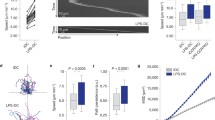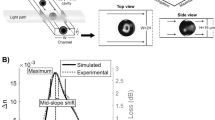Abstract.
Objective and design: Dendritic cells (DCs) are considered as the principle initiators of immune responses by virtue of their ability to migrate into target sites, process antigens and activate naive T cells. Here, the chemotactic activity and intracellular signaling of fractalkine was analyzed and compared to well known chemotaxins.¶Methods: The mRNA-expression of G protein-coupled CX3CR1 was analyzed by RT-PCR. Chemotaxis was measured in 48-well Boyden chambers and actin polymerization by flow cytometry.¶Results: The mRNA-expression of CX3CR1 in immature and mature DCs was revealed. Fractalkine elicited actin polymerization and chemotaxis in a dose-dependent manner in DCs independent of their state of maturation.¶Conclusions: These results show that immature and mature DCs express mRNA for the CX3CR1 and that fractalkine induces chemotaxis and migration associated actin polymerization in immature as well as in mature DCs, contrasting with the action of other chemokines such as RANTES or MIP-3beta which act only on distinct maturation states of DCs.
Similar content being viewed by others
Author information
Authors and Affiliations
Additional information
Received 10 October 2000; returned for revision 23 February 2001; accepted by M.J. Parnham 28 June 2001
Rights and permissions
About this article
Cite this article
Dichmann, S., Herouy, Y., Purlis, D. et al. Fractalkine induces chemotaxis and actin polymerization in human dendritic cells . Inflamm. res. 50, 529–533 (2001). https://doi.org/10.1007/PL00000230
Issue Date:
DOI: https://doi.org/10.1007/PL00000230




